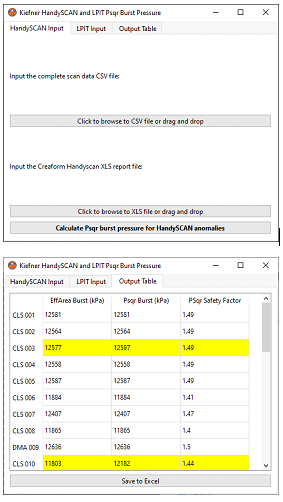Psqr Plausible Corrosion Profiles

Advanced Metal Loss Burst Pressure Analysis with Kiefner’s Psqr Tool
The determination of a tool’s burst pressure, especially in the context of metal loss anomalies, is a foundational aspect of pipeline integrity management. Recent advances in the pipeline industry have shifted from deterministic methods to more nuanced probabilistic approaches. A frontrunner in this development is the Psqr methodology. This method delivers more realistic burst pressure predictions, especially for complex corrosion profiles.
The Need for Advanced Analysis
Traditional methods, like ASME B31G and RSTRENG primarily focus on a 1D river bottom profile of corrosion pitting to derive burst pressure. While these methods provide a baseline, they may not be comprehensive enough for complex corrosion geometries.
Introducing the Psqr Method
- Axially Progressed Corrosion: In cases where corrosion is in a single pit or has expanded axially, Psqr’s burst pressure prediction aligns closely with the RSTRENG results.
- Circumferentially Progressed Corrosion: For “wide” corrosion profiles or those that have expanded around the pipe’s circumference, Psqr showcases its strength, delivering a burst pressure estimation that is much more in tune with the physical realities of such anomalies.
Kiefner’s Psqr Tool – A Game Changer
Understanding the need for a software solution that seamlessly integrates with the Psqr methodology, Kiefner has developed the Psqr tool tailored for efficient and precise analysis.
- User-Friendly Interface: The software is designed for easy use. Users can effortlessly input data into the tool from 2D laser scans (LPIT) or Creaform HandyScan 2D laser datasets.
- Comprehensive Output: Once the data is imported, the tool works its magic, producing a highly accurate Psqr burst pressure analysis for all detected corrosion anomalies.
Conclusion
Kiefner’s Psqr tool represents a significant leap in the realm of burst pressure analysis. Its ability to deliver accurate, nuanced results, especially in complex corrosion profiles, is an indispensable tool for pipeline operators aiming for optimal integrity management.
For those looking to make the switch from deterministic methods and explore the enhanced predictive capabilities of probabilistic approaches, Kiefner’s Psqr tool offers an ideal solution.
For more information about the Psqr Plausible Profiles Approach, please contact us at [email protected].

